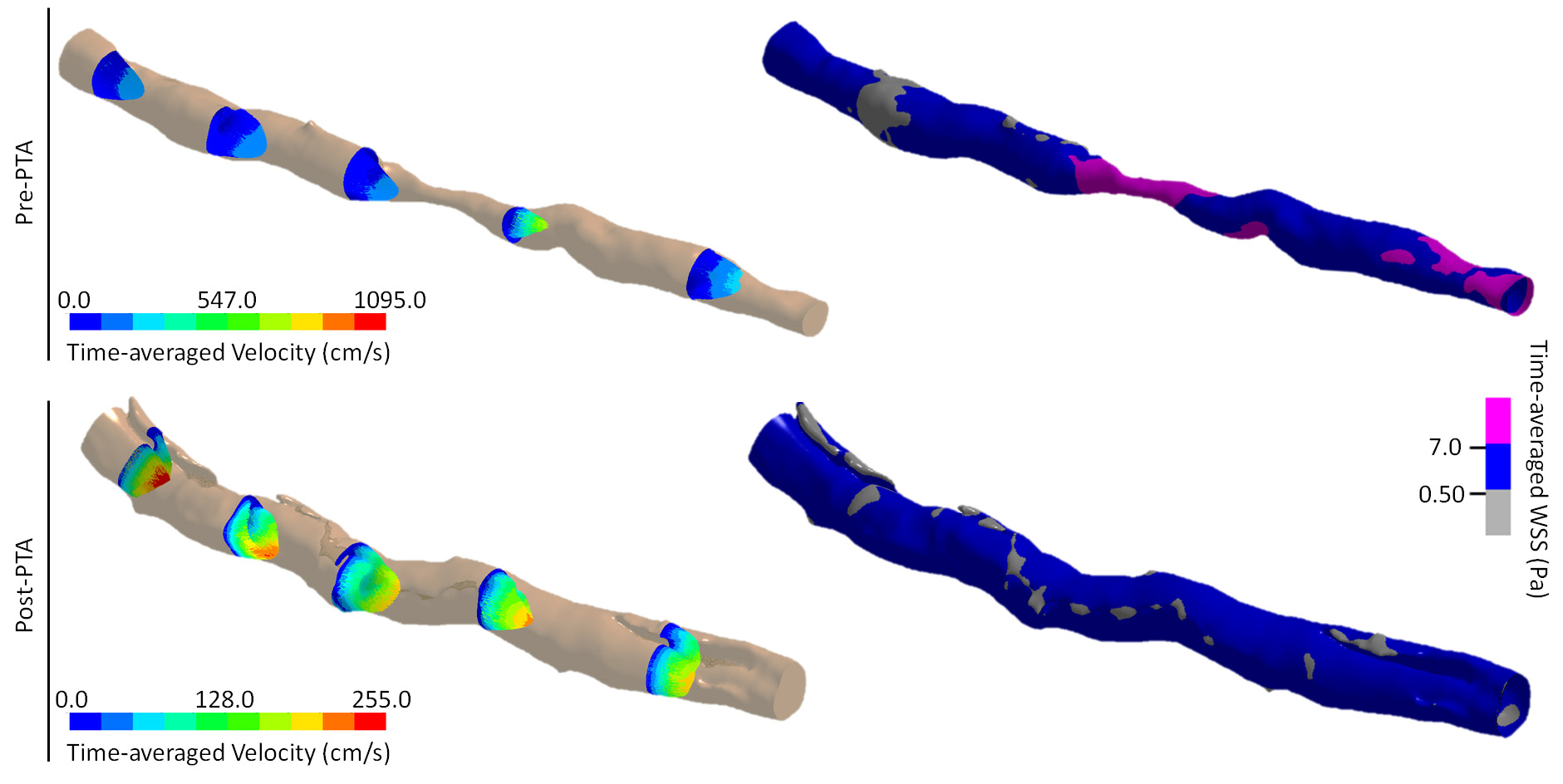2021/10/07 | Research | Biomechanics
Personalized models to predict artery restenosis
The blockage of a femoral artery can be treated by angioplasty, with the option of leaving a stent in the artery after reopening. However, a significant percentage of patients suffer from arterial restenosis, which requires an additional surgical intervention. A better understanding of the biomechanical environment responsible for restenosis would allow physicians to optimize the treatment of their patients. The ARTORG Computational Bioengineering (CBE) group has now proposed a method that has the potential calculate the patient-specific risk for restenosis using a computational model that combines conventional imaging with intra-arterial OCT imaging.
 The development of time-averaged flow velocity and distribution of time-averaged Wall Shear Stress (TAWSS) in an artery (P3) before and after PTA.
(https://doi.org/10.1038/s41598-021-96030-2)
The development of time-averaged flow velocity and distribution of time-averaged Wall Shear Stress (TAWSS) in an artery (P3) before and after PTA.
(https://doi.org/10.1038/s41598-021-96030-2)
Angioplasty is increasingly performed as only-percutaneous transluminal angioplasty (without stenting). Nevertheless, restenosis occurs even without a foreign object remaining in the artery. The hemodynamic behavior in the artery after the endovascular treatment of peripheral arterial disease plays an important role in this phenomenon. A team of researchers from the ARTORG CBE group with the Department of Cardiology of the Inselspital, the Angiology Departments of the Vascular Institute Central Switzerland and the Cantonal Hospital of Fribourg, has now proposed a new computational model to calculate the individual risk of restenosis based on arterial hemodynamics.
Because the computer model combines standard patient radiographs with the geometry of the intra-arterial lumen from high-resolution optical coherence tomography (OCT) images, it can describe arterial anatomy more accurately than models based on a single imaging modality. When applied to a data set of eight patients, the imaging combination was able to capture patient anatomy with very high accuracy and provided a detailed understanding of hemodynamic behavior after angiography treatment with and without arterial stents. The researchers concluded that numerical models based on OCT have great potential to help clinicians choose the optimal treatment approach on a patient-specific basis.